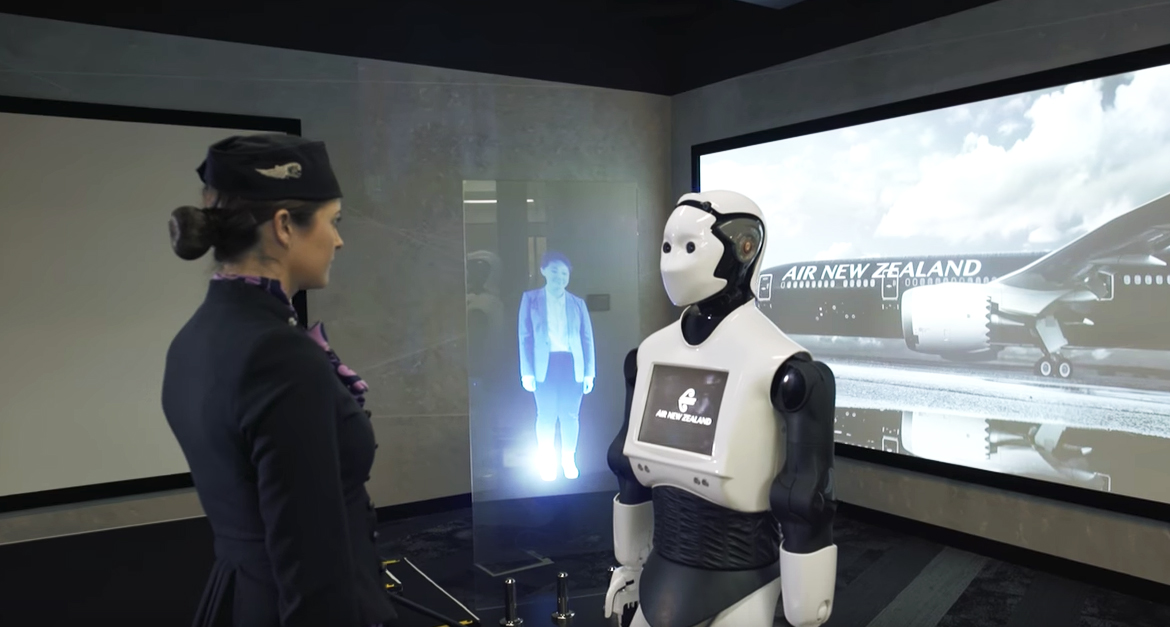A tale of two robots
It was the best of times, it was the worst of times. It was the age of wisdom, it was the age of foolishness. It was 1859 when Dickens wrote Tale of Two Cities and in short, the period was so far like the present … it’s downright scary.
And that’s before you start talking about robots.
This week I read two stories about robots that looked so similar they could have been brothers. One in a Sydney airport and another in a Scottish supermarket. Both experiments in the future of customer service.
Introducing ‘Chip’, he’s here to help.
Air New Zealand partnered with CommonWealth Bank to run a five day trial with ‘Chip’. CDO Avi Golan says “the experiment is another way we are pushing the boundaries to ensure we remain at the forefront of technology which will allow us to further enhance the experience we offer our customers". And that’s great. Boundaries pushed. Apparently ‘Chip’ can ‘converse’ with customers and point them in the right direction. But the robot itself? It’s scary.
Farewell ‘Fabio’, he just got fired.
Same day I clocked a story about Fabio. Similar story. Similar tech. But he started work a few days earlier. And that’s how long it took them to ‘fire’ him. ‘Fabio’ was part of an experiment run for a BBC programme. It was his job to interact with customers saying hello, telling jokes and helping them find stuff in the store. As it happened he freaked people out. It’s not hard to see why.
Can we replace humans with robots?
That’s the goal in the examples above. And it’s not quite working. Yet. But in hundreds of other examples, it already does. I reckon Air New Zealand’s most successful robot is the kiosk that checks you in. I also love the robots in the Supermarket that beep and weigh my stuff so I can whistle through the automatic check out. And let’s not forget the quiet brilliance of automatic teller machines, helpful little robots that give you access to your cash at any time of the day or night. But things go wrong when robots start looking like people. Or do they?
Leaping the uncanny valley.
Idealog recently published a piece about a business called Soul Machine. Their goal is to build life-like, learny, interacty avatars that talk to you just like humans. And they’re next-level brilliant and they seem to be working. But why is that?
Back in the 1970s a Japanese robotics guy called Masahiro Mori noticed that the more robots resembled humans, the more people connected with them. To a point. But as soon as he started adding synthetic skin, people began to freak out. His theory was that robots without human characteristics were a bit boring. But too many human characteristics and they generate a sense of disquiet and even dread - like a high-fiving android in a Supermarket. Mori identified the balance between nearly human and fully human as the uncanny valley. – and avoiding it is all about understanding people.
Moore’s law keeps giving us more. We need to stay focussed on people.
Back in 1965, a tech guy called Gordon Moore (co-founder of Intel) observed that the number of transistors in a dense integrated circuit doubles every two years. Loosely translated that says the potential applications of computerised technology double every two years. It’s exponential technological change. And we’re living it. And it’s changing the world. The way we work is being disrupted. The way we communicate has changed out of sight. Politics is all over the place. Economists are re-working the rules. Even reliable constants like currencies are all up for grabs as technology pushes us ‘forward’.
But the thing that doesn’t change is people. We still like to surround ourselves with friends and family. We need the essentials to keep us fed and warm and we like the treats to spoil each other and create experiences. We’re happy when we feel safe and sad when we’re scared or alone. These are the constants of the human condition. And these are the fundamental building blocks of marketing. And that’s the point.
Forget www try Who? What? Why?
Living through the disruptive pace of Moore’s Law it’s easy to get caught up in the shiny and new. The robots aren’t coming, they’re already here. And those algorhythms and platforms and chatbots give us smart new ways to grab attention and sell more stuff.
But if you’re finding it hard to keep up, just do what we do and go back to basics. Ask yourself three simple questions: Who are we trying to help? What can we do to help them? and Why will they care? And from that baseline of solving genuine problems for real people the future will be so much like the present… only better.
That’s what I reckon, what do you think?


